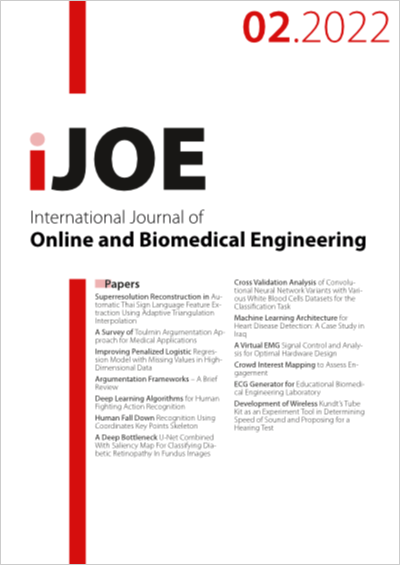Machine Learning Architecture for Heart Disease Detection: A Case Study in Iraq
DOI:
https://doi.org/10.3991/ijoe.v18i02.27143Keywords:
Data mining, Heart Disease, Prediction, Classification, Dataset, WEKA tool, REPTREE, Naïve Bayes, J48, K-star.Abstract
In recent years, the amount of data has been increased dramatically, driven by many real-world fields such as marketing, learning, social media, multimedia, medicine…etc. Because of that, data mining algorithms have extensively used on these data to serve as one of the newest data modeling and analytical tools, by which, a knowledge-rich environment can be generated and decision-making can be improved. Data mining tools can be employed for reducing these tests and predicting future trends by valuable information-driven decisions. There are two categories of data mining algorithms: descriptive and predictive. The rules of clustering, association, summarization, and sequence discovery will be associated with descriptive type. On the other hand, predictive type will compromise classification, regression and time series analysis rules. In this paper, a study have been presented for helping specialists and physicians in Iraq to investigate heart problems via (Weka 3.8.3) software focusing on four data mining classification techniques (1BK, J48, Naïve Bayes and REPTREE). The predictive precision tests, the ROC curve, and the AUC value are calculated using a compiled dataset that have been obtained from the hospital of Ibn al-Bitar and the hospital of Baghdad medical city. The performance of the J48 technique (94.5%) indicates optimum performance based on SMO no performance factor of Baghdad medical city.
Downloads
Published
How to Cite
Issue
Section
License
Copyright (c) 2022 BASMA JUMAA SALEH, Ali Talib Qasim al-Aqbi, Rana Riad K. Al_Taie

This work is licensed under a Creative Commons Attribution 4.0 International License.



